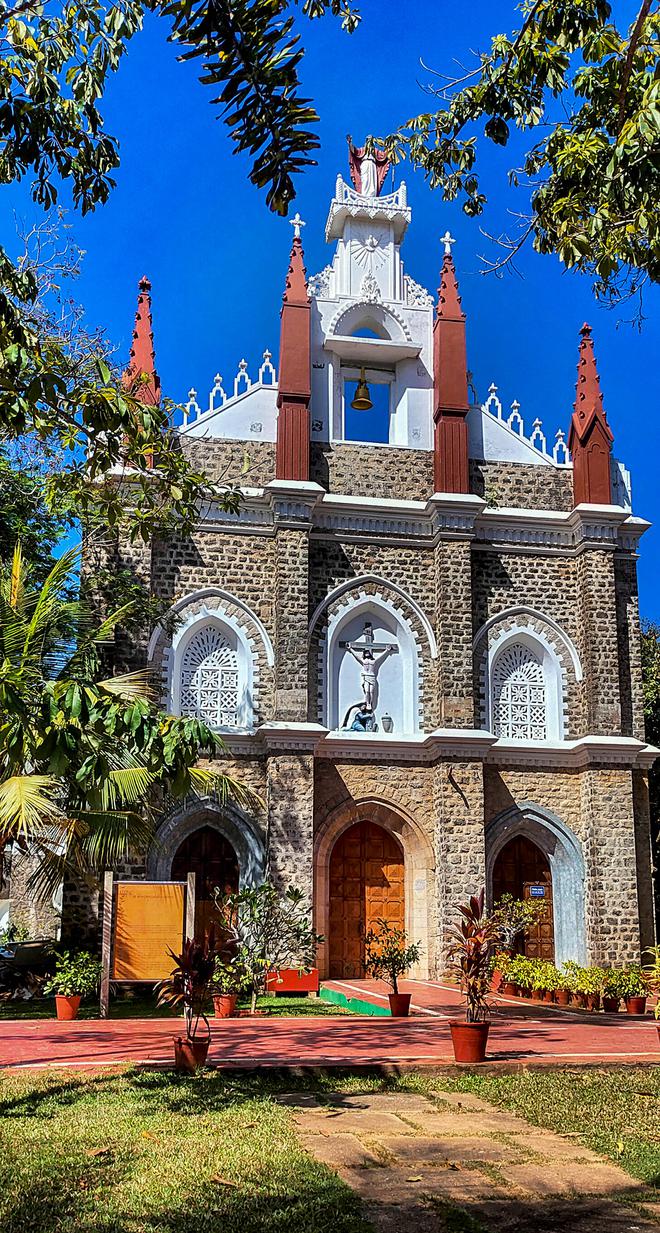As the entire nation rejoices over the historic success of India’s Moon mission Chandrayaan-3, the Latin Church, a prominent Catholic denomination in Kerala, has reason to be a bit more excited as they played a unique role in India’s space saga.
Long before India started dreaming about a Moon mission or a Mars expedition and the country’s space programme was in the stage of infancy, it was the Latin Church that had wholeheartedly given their parish church and the adjacent bishop house for setting up the first unit of the Thumba Equatorial Rocket Launch Station (TERLS) here.
TERLS was later renamed Vikram Sarabhai Space Centre (VSSC).
Without hiding the Church’s happiness and excitement over the resounding success of the Moon mission, Latin Archdiocese Vicar General Fr Eugene H Pereira said the Church and its faithful have always given the development of the country their top priority.
“We, the Church and the fishermen community in the coastal areas here, are very happy and proud about the Indian Space Research Organisation’s achievement,” he told PTI.
Fr. Pereira said they were proud to say that the archdiocese of Thiruvananthapuram and St. Mary Magdalene Church in Thumba, a fishing hamlet located on the outskirts of Kerala’s capital city, was able to play a key role in giving wings to the country’s space mission dreams.
During the 1960s, the site housing the Magdalene church, which had been a solace and hope for hundreds of fishermen’s families in Thumba, was found ideal by space scientists for setting up a rocket launch station due to its close proximity to the earth’s magnetic equator.
Vikram Sarabhai, the founder of India’s space programme, had met the then Latin Church bishop Peter Bernard Pereira and requested his support in handing over the site of the church building and the adjacent areas for the country’s space programme.

The generous bishop not only readily agreed to hand over the church but also agreed to talk to its members belonging to the fishing community in Thumba and convince them about the significance of space science.
“The bishop talked to the faithful in the presence of Sarabhai and our beloved scientist and former president A.P.J. Abdul Kalam and convinced them about the need to release the church land. All the believers gathered at the church agreed to his suggestion,” the Vicar General recalled.
The incident had thus become a rare episode of bringing belief and science together in the history of the country, he said.
Kalam later wrote in his autobiography how the Magdalene church housed the first office of the Thumba space centre; its prayer room became his first laboratory; and a tiny room in the bishop’s house became his design and drawing office.
The country’s first rocket launch (a sounding rocket assembled on the church premises) took place in Thumba on November 21, 1963.
The name of St Mary Magdalene Church and the generous bishop have thus become glittering episodes in India’s space history.
In 1985, the majestic church was converted into the VSSC Space Museum, which is now visited by thousands every month. The space museum showcases the history and achievements of the Indian space programme.
“The VSSC Space Museum is in a majestic church building that was St Mary Magdalene Church till the 1960s. This place is considered the birthplace of the Indian space programme. It was in this church that the first rocket systems were assembled and integrated,” its official website said.
It also said that the building assumed multifaceted roles in the beginning of the ISRO by acting as the first lab and as the main office for scientists in the early days.
“The Bishop House, forming part of the church, functioned at that time as the office of the Director, TERLS. As the scientific activities gathered momentum, new projects came up, which necessitated the construction of new buildings. The first in line were the Control Centre and then the R&D complex on the Veli Hills, all of which relegated the church building into the background,” it further said.
The Church hopes that the authorities will take steps to give Bishop Pereira’s name to the space museum at the VSSC.
“The space centre has been named after Sarabhai. So, we want the space museum to be named after Peter Bernard Pereira, the generous bishop who gave wings to the country’s space mission dreams by handing over the church to scientists,” Fr. Pereira added.
In a giant leap for its space programme, India’s Moon mission Chandrayaan-3 touched down on lunar surface at 6.04 p.m. on Wednesday, propelling the country into an exclusive club of four nations who have achieved the rare feat, and making it the first country to land on the uncharted surface of the south pole.
With this touchdown on the Moon after a flawless 41-day voyage and less than a week after a Russian lander headed to the lunar south pole crashed, India has become the fourth country to master the technology of soft landing on the Moon after the U.S., China, and the erstwhile Soviet Union.







